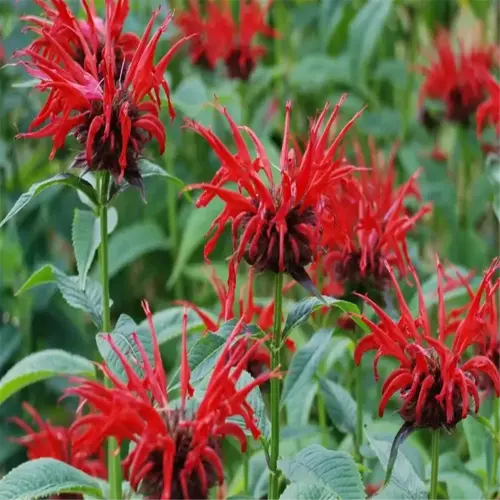Full Sun Annuals: Blooms That Thrive in Sunshine

Written by
Kiana Okafor
Reviewed by
Prof. Martin Thorne, Ph.D.Full sun annuals flourish without pause as long as they receive 6+ hours of sunlight each day.
Drought tolerant types, like Lantana and Portulaca, grow well in poor soil.
To maximize color in any size garden, work vertically.
Water deeply once a week and avoid light, daily sprays, to improve root health.
Myth: Full sun annuals will attract pests (truth: many repel them).
Plant zinnias and sunflowers to benefit bees and butterflies.
Article Navigation
Annuals that tolerate full sun prefer to receive at least six hours and up to 14 hours of direct sunlight each day. These cheerful, colorful plants bloom continuously from spring until late fall or the first frost of the season. They are perfect for borders, large containers, and filling in garden beds. Picking easy-care annuals like marigolds and zinnias is a great place to start.
Consider a garden filled with beautiful flowers even in the July heat. Drought-tolerant varieties such as lantana or portulaca require very little watering once established. I have seen planters along sidewalks that were neglected for even a month but still had these hardy annuals thriving. These plants forgive you better for missed waterings than finicky perennials still getting established.
Not all annuals require perfect soil. Gazania and cellosia are perfect for sandy areas or on rocky patches of ground. I used sun-loving verbena one year to revitalize an empty corner, and it did beautifully. Its trailing habits softened up the edges, and it provided beautiful flowers for butterflies throughout the year. Additionally, be creative when using different textures to create complex visuals.
Just starting with a garden? Consider plants that are good for pollinators like sunflowers. They also grow quickly so beginners are rewarded with results sooner than you may expect! I like to pair sunflowers with something else that has silver leaves, like dusty miller. Annuals also perform more work in bright sun than nearly any other plant. They require little care in return, yet will reward you with plenty.
Top 10 Full Sun Annual Varieties
Drought-tolerant annuals, such as zinnias and portulaca, are in full sun and lead the charge with drought resistance. Once established, these annuals need little to no water, and I have used zinnias to perk up sun-baked clay soil that does not pop, letting their brilliantly colored blooms survive heat waves in August without wilting. I also like to combine these zinnias with salt-tolerant lantana for coastal gardens.
Marigolds serve as little botanical warriors to defend gardens. Their intense stench can deter many pests, including nematodes and rabbits. I put marigolds around vegetable beds as living pest deterrents. Choose African marigolds for big, bright, orange pom-poms or French varieties with fern-like leaves for a more delicate look; both of these handle full sun without breaking a sweat.
Be purposeful in your planning. Electric purple verbena spilling over stone walls creates impact. Paired with the bold, colors of lemon yellow Bidens, you will have something definably eye-catching. In my client's gardens, this couple acts as a magnet to pollinators while obscuring their sometimes leggy stems. Be aware of blooms when designing your color plans.
Foliage should not be neglected. Dusty Miller's silver leaves cool down hot color schemes with an edgy juxtaposition. Dusty Miller loves full sun, welcoming all the heat where so many plants would rather die of heat exhaustion. I grow Dusty Miller in terracotta pots with coral portulaca, and the arrangement lasts from May through October without any deadheading.
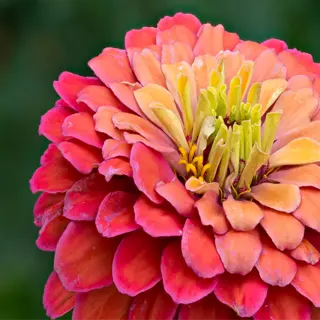
Zinnias
- Fact: Drought-resistant blooms lasting 8-10 weeks in 80°F (27°C) summer heat
- Design Tip: Pair with silver-leaf dusty miller for high-contrast color displays
- Pollinator Value: Attracts butterflies and hummingbirds throughout growing season
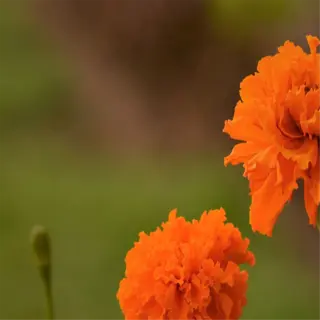
Marigolds
- Fact: Natural pest repellent against nematodes and aphids in vegetable gardens
- Design Tip: Use dwarf varieties for container edging and pathways
- Care Note: Remove spent blooms weekly to extend flowering period
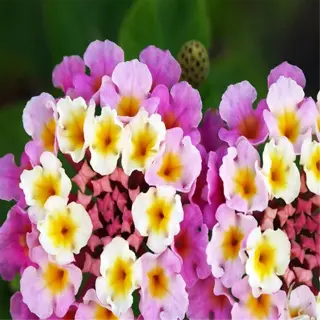
Lantana
- Fact: Thrives in temperatures above 80°F (27°C) with minimal watering
- Design Tip: Plant on slopes for erosion control and color coverage
- Warning: Keep away from pets due to mild toxicity risks

Portulaca
- Fact: Requires only 1 inch (2.5 cm) of water weekly in dry climates
- Design Tip: Ideal for cracks between pavers or stone walls
- Unique Trait: Flowers close nightly and reopen at morning light

Sunflowers
- Fact: Grows 6-12 feet (1.8-3.6 meters) tall in optimal conditions
- Design Tip: Plant along fences for vertical architectural interest
- Wildlife Value: Seeds attract finches and songbirds in late summer
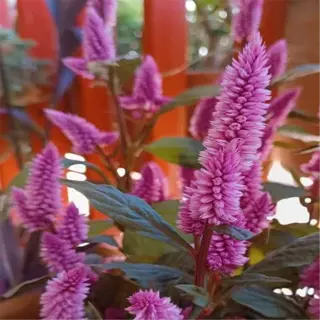
Celosia
- Fact: Flame-shaped blooms retain color for 10-12 weeks without fading
- Design Tip: Combine with purple salvias for complementary contrast
- Drying Tip: Air-dry flowers for long-lasting indoor arrangements
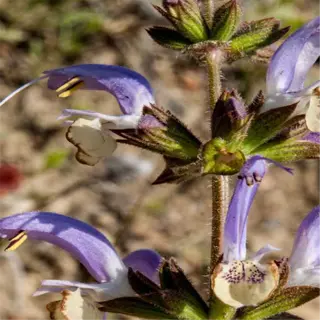
Salvia
- Fact: Spike-shaped blooms attract bees from early summer to frost
- Design Tip: Use as backdrop for shorter annuals in borders
- Care Note: Cut back spent stems to encourage second bloom

Verbena
- Fact: Spreads 18-24 inches (45-60 cm) wide as flowering groundcover
- Design Tip: Plant in window boxes with trailing ivy accents
- Pollinator Plus: Nectar source for monarch butterflies during migration
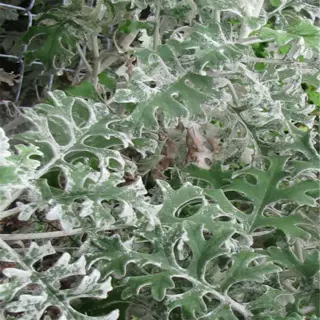
Dusty Miller
- Fact: Silver foliage reflects sunlight in 90°F (32°C) heat
- Design Tip: Contrast with dark-leafed coleus or purple petunias
- Care Note: Avoid overwatering to prevent root rot issues
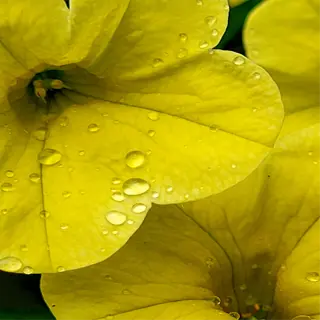
Petunias
- Fact: Produces 200+ blooms per plant from spring through fall
- Design Tip: Combine with white alyssum for moonlight gardens
- Hybrid Tip: Choose self-cleaning varieties to reduce maintenance
Designing a Vibrant Full Sun Garden
Diverse colors can elevate the beauty of a garden from mundane to fabulous. Bright orange marigolds can make a bold statement when planted alongside purple salvias. I did this last summer with a client's border. The salvias were loaded with hummingbirds while the marigolds kept the bugs away while adding a different texture. I tend to think of balancing warm colors with cool colors in a way that feels pleasant to view.
Using a vertical thinking approach, you'll want to put tall sunflowers at the back, bushy lantana in the middle, and trailing petunias along the edges. This layering trick was used in a client's garden on their rooftop terrace and created depth across a 10-foot by 10-foot space. Using vertical interest allows even the smallest of yards to feel full and lush.
Put drought-tolerant choices, such as Portulaca and Verbena which have similar water needs, together so they can utilize the same water conserving all those resources. I accomplished this in my project in Arizona where I was successful and reduced my irrigation by at least 40%. I threw in a little silver-leafed dusty miller to add texture between the blooms. Having applied these principles decreases your workload while getting the most blooms.
Containers are a solution for people who are short on space. Try using thriller-filler-spiller combinations: celosia spikes, white alyssum, and cascading sweet potato vine. I have grown these combos in containers on balconies for clients with good results. Pro-tip: create a reservoir of water, put a layer of gravel in the bottom of your container. The red and pink varieties of celosia are the most attractive for hummingbirds.
Color Schemes
- Monochromatic: White petunias + silver dusty miller
- Contrasting: Blue salvia + orange marigolds
- Seasonal Transitions: Replace spring pansies with summer zinnias
Layout Techniques
- Place tall plants (sunflowers) north-facing to avoid shading
- Use medium-height lantana as borders along walkways
- Allow 18-24 inches (45-60 cm) between plants for airflow
Container Tips
- Combine thriller (celosia), filler (marigolds), spiller (portulaca)
- Use self-watering pots for 90°F (32°C) summer days
- Add perlite to potting mix for drainage in small spaces
Soil Preparation
- Testing: Check pH levels (ideal 6.0-7.0) before planting
- Amendments: Mix 3 inches (7.6 cm) of compost into clay soils
- Mulching: Apply 2-inch (5 cm) bark layer to retain moisture
Seasonal Rotation
- Spring: Plant cool-season annuals like pansies first
- Summer: Transition to heat-loving zinnias and portulaca
- Fall: Replace spent plants with frost-tolerant mums
Soil Preparation and Watering Essentials
Full sun annuals require specific soil preparations. If you have clay soil, amend it with a combination of 3 inches of compost and coarse sand to improve drainage. If sandy soil is your situation, incorporate an equal amount of peat moss to help retain moisture. After both amendments were made, a client's garden in Houston flourished. Test the soil pH every year for the best results.
The amount of water a plant requires is not one-size-fits-all. Deep-rooted zinnias need to be soaked weekly in order to reach down into the dirt to a final depth of 8 inches. Shallow-rooted portulaca will happily settle for light, frequent sprinkles of water. I check root depth by carefully digging into the dirt around the plants. Pro-tip: Water in the morning to minimize evaporation in arid climates.
Rebels who withstand drought break the rules. Lantana thrives in the dry, cracked soil of the adjoining driveway when other plants wilt. I once saw a portulaca blooming in an abandoned parking lot. So abandon the amendments; these plants are whatever, we just water the bulimic plants like sunflowers. They are different from the others, not in the majority.
Be smarter, not harder about mulching. Bark chips work best in dry climates like Arizona, use approximately 2 inches. In humid areas, limit yourself to about 1 inch of mulch so it won't mold. Gravel mulch can be used for succulent annuals like moss rose. Never let mulch come in contact with stems, it will rot.
Soil Testing
- pH Testing: Ideal range 6.0-7.0 for most annuals
- Drainage Check: Dig 12-inch (30 cm) hole; water drains in <2 hours
- Nutrient Analysis: Use kits to detect nitrogen/phosphorus deficits
Watering Techniques
- Deep Soak: 1 inch (2.5 cm) water penetrates 6 inches (15 cm) deep
- Morning Watering: Reduces evaporation in 85°F (29°C) heat
- Drip Systems: Save 30% water vs. sprinklers in arid zones
Mulching Guidelines
- Organic Mulch: Apply 2-3 inches (5-7.6 cm) shredded bark
- Inorganic Mulch: Use gravel in rainy climates (>40 inches/100 cm annual rain)
- Avoid Stem Contact: Leave 2-inch (5 cm) gap around plant bases
Drought Adaptations
- Xeriscaping: Group portulaca, lantana, gazania together
- Rainwater Harvest: Collect 50 gallons (189 liters) per 1,000 sq ft (93 m²)
- Shade Cloth: Use 30% shade netting in 100°F (38°C) heatwaves
Troubleshooting
- Overwatering Signs: Yellow leaves + soggy soil
- Underwatering Signs: Wilting at 75°F (24°C)+ temperatures
- Soil Fixes: Add gypsum to clay; compost to sandy soils
Low Maintenance and Drought-Tolerant Picks
Self-cleaning annuals save time in a busy landscape. Examples include Bidens and angelonia. When these blooms finish flowering, they simply drop their spent blooms without the need for tedious deadheading. I have employed these in landscapes for busy clients that don't provide much maintenance. They keep the garden color and garden alive without constant upkeep. These annuals can also be combined with drought-tolerant lantana for color and fire-and-forget ideas.
Coastal gardeners could always use some salt-tolerant warriors. Gazania has leathery leaves that shrug off ocean spray, and it seems to bloom and bloom. Lantana, on the other hand, thrives in sandy soils where even the plants look yellow in good condition. I've seen the most neglected beachside planters blow up with these seasoned performers. They are perfect to add beauty with minimum effort in those coastal spots.
Succulent annuals, such as portulaca, take on very little moisture. They tend to store moisture in their fleshy, succulent leaves and can go for weeks without rainfall. Think about how thirsty marigolds are and how they have to be watered every week. Therefore, when planted in a mixed garden, group plants that have the same watering needs by zone. Put succulents in one section and traditional annuals in another. This zoning makes it easier for a gardener to water and irrigate the garden.
Deer steer clear of strongly scented marigolds and fuzzy-leafed heliotrope. I've used them to protect the gardens of my clients in rural areas as a natural deer repellent. Interplant them with sensitive species for living fences or screens. To further deter foraging, integrate motion-activated sprinklers. You'll have beauty and function in a low-maintenance format!
Water-Saving Strategies
- Deep Watering: Soak soil 6-8" (15-20 cm) weekly
- Mulching: Retain moisture with 2" (5 cm) bark chips
- Timing: Water at 6-8 AM to reduce evaporation
Heat Adaptation
- Leaf Structure: Waxy leaves (lantana) retain moisture
- Root Systems: Taproots (portulaca) access deep water
- Sun Tolerance: 12+ hours daily at 95°F (35°C)
Low-Maintenance Features
- Self-Cleaning: Bidens drop spent blooms naturally
- Pest Resistance: Marigolds repel nematodes
- Disease Resistance: Zinnias avoid mildew issues
Design Applications
- Slopes: Lantana prevents erosion
- Containers: Portulaca thrives in 6" (15 cm) pots
- Borders: Dusty Miller edges pathways
Climate Adaptations
- Coastal: Gazania tolerates salt spray
- Desert: Zinnias thrive in 100°F (38°C)
- Humid: Verbena resists fungal issues
Attracting Pollinators with Annual Blooms
Annuals teeming with nectar such as those in the Zinnia or Lantana genus are funneling seeds that pollinators love!Pollinators can get right onto the flower with zinnias and mono-petaled flowers like a hibiscus. In the spring of last year, I developed a new garden for a client that incorporated these varieties. By July it was FULL of honeybees and swallowtails. If you are choosing flowers for your garden I would strongly urge you to select single-petaled flowers instead of double-petaled flowers that are harder for pollinators to get to.
To have year-round support, stagger bloom times (the blooming of plants, flowers, etc). Pansies that bloom early in the spring will feed newly emerging bees in April. Sunflowers planted in the summer will sustain migrating monarch butterflies while there is still time to prepare for their south journey. Asters that bloom in late fall will help prepare butterflies for winter. A project I did in Pennsylvania maintained activity in this sequence from frost to frost. You can check your frost zone to determine the best timing.
Hummingbirds are drawn to flowers that are pink or red by instinct. I usually plant cigar flowers (cuphea) next to my windows to enjoy their aerial show. The tubular shape of the flower works perfectly with the beaks of hummingbirds. I like to pair cigar flowers with pink petunias and an annual flower called a torenia. It's a good fill for any gaps in a container system. Don't use pesticides since they will kill the very creatures that you are trying to attract. Combined with natural or organic solutions are the best.
Companion plants increase habitat value. By growing *dill near marigolds*, you'll attract swallowtail caterpillars while deterring pests. I like to use nectar-rich verbena along the edge of my vegetable plots, where they will attract beneficial insects to eat aphids. I also like to add some basil for fragrance and to attract pollinators. Biodiversity is essential to productive ecosystems!
Nectar-Rich Picks
- Zinnias: Produce nectar 8-10 weeks in 70-90°F (21-32°C)
- Lantana: 5x more nectar than average annuals
- Sunflowers: 2000+ florets per bloom attract diverse species
Seasonal Support
- Early Season: Plant pansies for emerging spring bees
- Mid-Season: Add salvias for monarch migration routes
- Late Season: Grow asters for pre-hibernation butterflies
Color Strategies
- Butterflies: Plant purple coneflowers + yellow marigolds
- Hummingbirds: Use red/pink petunias in hanging baskets
- Bees: Group blue salvias in 3x3 ft (0.9x0.9 m) clusters
Habitat Enhancements
- Water Sources: Add shallow dishes with pebbles
- Shelter: Leave 12x12" (30x30 cm) bare soil patches
- Host Plants: Include milkweed for monarch caterpillars
Toxic Plant Alerts
- Avoid: Oleander (toxic to all pollinators)
- Caution: Lantana berries harm birds if ingested
- Safe Choice: Sunflower seeds nourish overwintering birds
5 Common Myths
Annuals in full sun require for survival daily water during hot summers.
Most full sun annuals prefer to be watered deeply and infrequently (1-2x weekly). Overwatering causes root rot. For example, zinnias need only 1 inch (2.5 cm) of water per week to have an abundance of blooming at 90°F (32C).
All annual flowers marketed as 'full sun' do not tolerate partial shade and will die.
Many full sun annual flowers tolerate 4-6 hours of shade. Cellosia, for example, will tolerate dappled light under trees and Lantana and Portulaca will tolerate morning sun and afternoon shade. Choosing the right variety will prevent you from failing in arguably the most difficult location to put together a mixed-light garden.
Annuals in full sun attract more pests than shade plants.
Drought toelerant annuals, like marigolds and lantana, naturally repel pests. Marigolds exudes alpha-terthienyl, a chemical that deters nematodes. Sunwilowers are attractive to beneficial insects like ladybugs that organically keep the aphids under control.
Annual full sun plants result in a degradation of the soil and soil nutrient capacity in a permanent way.
Annuals deplete only 0.5-2% of soil nutrients annually. Adding a 3-inch (7.6 cm) layer of compost replaces nitrogen. Planting legumes as a crop rotation measure helps to restore soil health even more in between crops.
Full sun annuals can't bloom before mid-summer.
Early bloomers like pansies and snapdragons flower in late spring. Heat-tolerant varieties like Profusion Zinnias bloom within 6 weeks of planting, providing color from May through October in most hardiness zones.
Conclusion
Annuals thrive in full sun effortlessly in environments composing desert heat or coastal breezes. In other words, for example, a client had a rock garden in Arizona where portulaca and verbena flourished, while a cottage in Maine had generous beds filled with cold-hardy pansies. Wherever your growing zone, these annuals provide color at times when little else does. Such vigorous reliance and annuals effectively act as a problem-solver all the way around!
Experiment boldly with shade and texture. I once put together a spiky blue salvia with a velvety red celosia in a client's planter on a patio. The result? A hummingbird destination that far exceeded what you would get with typical flowers. Silver-leafed dusty miller can tone down hot orange marigolds. Surprise is the magic in small spaces.
Keep in mind the double wins. Lantana saves water, but also attracts butterflies. Zinnias that you cut for bouquets leave behind blooms that bees will be attracted to. A rooftop garden I designed reduced irrigation by 50% by using these stars. Sustainability and beauty can be partners in smart gardening - they're not rivals.
Showcase your successes. Upload images of your pollinator paradise or your drought-resistant containers, tagging our community. We acknowledge every scarlet petunia or visit from a sweat bee. Your experience encourages others to bring a shovel and explore deeper. Gardens grow better when we grow them together. Now off you go, get dirty!
External Sources
Frequently Asked Questions
What are the best annuals for full sun gardens?
Top drought-tolerant, vibrant choices include:
- Zinnias (bloom in 20+ colors, attract butterflies)
- Lantana (heat-loving, deer-resistant, multicolor clusters)
- Portulaca (thrives in poor soil, self-seeding)
- Marigolds (pest-repellent, low-maintenance)
How often should I water full sun annuals?
Water deeply 1-2x weekly; drought-tolerant varieties like portulaca need less. Avoid daily light watering, it promotes shallow roots. Check soil moisture 2" (5 cm) deep. Mulch retains moisture in 90°F+ (32°C+) heat.
Can full sun annuals grow in partial shade?
Some tolerate 4-6 hours of sun. Lantana and celosia adapt to morning sun/afternoon shade. Avoid shade-loving annuals like impatiens. Always check plant tags for light requirements.
What are the easiest full sun annuals for beginners?
Low-maintenance picks:
- Marigolds (germinate quickly, pest-resistant)
- Sunflowers (grow 6-12 ft tall with minimal care)
- Petunias (bloom spring to frost, thrive in containers)
- Dusty Miller (silver foliage, zero deadheading)
Do full sun annuals attract pollinators?
Yes! Zinnias and sunflowers lure bees/butterflies; lantana draws hummingbirds. Plant in clusters for higher pollinator traffic. Avoid pesticides to protect beneficial insects.
What soil is best for full sun annuals?
Well-draining soil with 3" (7.6 cm) compost. Sandy soil? Add peat moss. Clay soil? Mix perlite. Target pH 6.0-7.0. Test kits are sold at garden centers.
Are there full sun annuals that repel pests?
Marigolds deter nematodes; chrysanthemums repel ants/roaches. Lantana's scent discourages deer. Pair these with vegetables for natural pest control.
How do I keep full sun annuals blooming all summer?
Deadhead spent flowers weekly. Use slow-release fertilizer at planting. For zinnias/petunias, shear back mid-season to stimulate new growth. Ensure 6+ hours of direct light.
Can I grow full sun annuals in containers?
Yes! Use 12" (30 cm) pots with drainage. Petunias, portulaca, and bidens thrive. Water containers daily in extreme heat. Pair thriller (celosia), filler (marigolds), spiller (sweet potato vine).
Do full sun annuals need fertilizer?
Apply balanced 10-10-10 fertilizer every 4-6 weeks. Drought-tolerant types like gazania need less. Over-fertilizing reduces blooms, follow package rates. Organic options: compost tea or worm castings.

